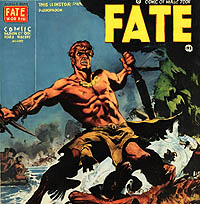Written for Jason Van Veldhuysen
For Jason’s commentary go to the Precision Striking link on the network page at jameslafond.com.
By James LaFond
For more on boxing history and methods go to www.jameslafond.com.
Ancient Equipment
The earliest form of striking equipment was not used for punching, but for kicking and other strikes specific to the pankration, the ancient Greek form of MMA. This bag was an entire pig skin filled with sand and hung upside down by the tail. The strike depicted being used on this equipment in the surviving artwork is the precise kick that was recently used by Anderson Silva to KO Vitor Belfort. A later source mentions the use of this device for clinch practice.
The second type of ancient striking equipment was a hanging ‘effigy’, a stuffed replica of a human torso, analogous to the freestanding anatomical ‘bobs’ preferred today for martial arts practice in karate schools.
The third type of ancient punching bag, preferred by boxers throughout antiquity, was a sack of barley hung from a roof beam. This item was about the size of a human head and moved more like a maize ball [the small bag used for head movement drills in some gyms] than any modern piece of striking equipment.
Bare-knuckle Era Equipment
Bare-knuckle boxers had learned their art without the aid of striking equipment for two hundred years, when, in 1877, American Middleweight Champion Mike Donovan began hitting a rugby ball in Troy New York, and then got the bright idea to hang it from the ceiling. Within ten years pro boxers [who, at this stage fought with bare-knuckles, driving gloves, and sometimes 6 oz to 8 oz ‘mufflers’] were using three types of punching bags based on the original ball that Mike had begun bouncing off of walls and punching back in Troy.
Only ten years into their use, punching bags were considered indispensable tools for developing combinations, or as combination punching was then called ‘two-handed punching’. A boxer was supposed to strike the bag with the bare-knuckles to condition his hands and learn how to avoid hand injuries.
The ‘flying bag’ was a rugby ball suspended from the ceiling on a string, and based on its name, was used to train cutoff punches and counter punches. It could not—when hung from the high ceiling of a barn or dance hall—be of much use for training combination punches. For men who fought without hand protection this was an important tool. To avoid chasing it and to work on combinations it was sometimes hung in a corner from a low ceiling.
The ‘heavy bag’ was a chamois cloth sack stuffed with horse hair [which was being used to stuff gloves up until the 1970s] that only weighed 10 to 20 pounds. It was usually hung from a rope and swung along a wide arc. If it was hit with a vertical fist [the common bare-knuckle fist orientation] or while it was swinging at the fighter, wrist injury was likely. It was not a favorite tool, and tended to be avoided.
The 'oval bag' was a large air-bladder double-ended reflex bag. This was the most popular type of bag in gyms on the eve of the gloved era circa 1890. It would fall into obscurity but survive. Film from Ray Robinson’s training camps [circa 1950] show him working this large double-ended bag.
The three types of bag described above would evolve into the three standard pieces of striking equipment present in boxing gyms until the early 1980s. The three pieces described below were standard and relatively unchanged from 1910 through 1990.
Old-time Equipment
The Speed Bag
The rugby ball strung in the corner had developed into the speed bag. The earliest form of the suspended swivel bag I have found is in a photo [circa 1900] of Robert Fitzsimmons training beneath a huge floor-mounted contraption with an overhead board that has a spring assembly in the center from which a large airbladder ball is suspended from 1 foot of string. This had to be hugely expensive and is in many ways more advanced than most modern striking equipment. However, within 10 years, the tool that dominated the gym with its ‘pappap-pa-pappap’ din was the smaller tear-drop shaped swivel bag, the favorite tool of Jack Johnson, eventually installed in carnival booths and bars as well as every boxing gym.
Modern Note: The trend over the decades has been to an ever smaller bag, with some now smaller than the fist of a heavyweight. The speed-bag is now generally misunderstood and underutilized as a training tool. Speed bags have traditionally rattled out of the walls if not properly mounted. One old time method my father used was to bolt a painted iron wagon wheel to the beams of the basement ceiling. This resulted in a dull thudding, rather than the loud smacking and pounding of a bag swiveling under a board bolted to the wall. If you have a wall-mounted speed bag that is rattling try strapping bags of gear or clothes to the top of the platform to absorb the vibrations and lend weight.
The Heavy Bag
It is possible that the traditional heavy bag evolved not from the swinging horse hair bag inspired by Donovan’s rugby ball, but from the stuffed duffel bag of hobo boxers like Jack Dempsey and innovative punching technicians like ‘Kid’ McCoy. The heavy bag has remained the most serious piece of training equipment available to the boxer for the past 100 years. If any boxing coach I know could have only one piece of striking equipment in his gym, this would be it.
Modern Note: Since the 1980s, boxing equipment manufacturers, led by Ringside, have developed many variations of this venerable tool. Some, such as the mushroom-shaped combination bag, are avoided by boxers due to the risk of wrist injury. Likewise, very well engineered and safe pieces of equipment like the free-standing reflex heavy bag, if used like a traditional bag, may cause wrist injuries. To get the most out of some modern variations on the punching bag, boxers must not mindlessly apply training techniques developed on the traditional hanging bag. The heavy bag tests your mental drive and conditioning beyond anything or anyone in the gym.
Double-ended Bag
Although this was the most common tool in 1890, by 1980, it was a rare find in boxing gyms, and would be dominated by the top fighters, the pros tuning up for a fight. It is now just as common as the speed bag and more widely used. It has also evolved into the even more lovable and less frustrating floor-mounted reflex bag.
Modern Note: The variety of reflex bags available to the modern boxer each has its own safety concern [albeit minor compared to heavy bag safety concerns] and specific optimal uses. The most common injury is to the knuckles and is acquired when punching the cord or unpadded hook or shaft fastening this bag to its mount. This is exasperated by fighters not respecting the light bags and hitting them bare-handed. The most common bad training habit on reflex bags is finishing a combination ‘in front’ of the bag. Combinations on a reflex bag should end either with a lead hand strike that keeps the bag on the end of a jab, or a power punch that places the boxer outside of the ‘pocket’ or ‘wheelhouse’ of his imaginary opponent, whose position is represented by the floor anchor and the direction the bag is reacting from.
Conclusion
Since 1990 more punching bag innovation has occurred than in all of human history. The trainers who prepared the ancient Greek fist-fighters, old-time boxers, modern boxers, and even modern stick-fighters, all understood then and now that a ‘bag trained’ fighter steps into the ring with much more firepower than a fighter that just spars. Part of this is the mental tenacity developed on the bag. When sparring or fighting you can always take a rest while your partner or opponent beats you up. Punching bags are never so accommodating. They make you work, or silently remind you that you are doing nothing, the entire time.
The Punishing Art











Is there any sources for your findings Of the earliest forms of striking equipment? I'm very interested in learning some history of. My buddy and I have only been using .gov or . Edu sites. This is why I ask if I could get a site or two from you please
I did my research at libraries, in paper books in the late 1990s, nothing online at all. I read all of the Greek and Latin science, civics, plays, poems, everything for references to boxing and training. I spent three years at 36 hours a week reading the private collection and paying for photocopies of the illustrations I found in the mostly 19th century and early 20th century English sources, and read the take out books from the public archive on the bus, for 1152 titles. I have found nothing additional in the sources I have searched since then.
I found three descriptions of striking apparatus and two illustrations. They are all collected in The Gods of Boxing, available through Amazon.
1. a hanging, sand-filled body bag
2. an effigy or anatomical dummy
3. a hanging, head-sized sack filled with barley
Also, since doing a lot of stick training, and keeping in mind that these men were all weapon fighters, I would be willing to bet that one of the methods that did not find its way into the scanty record was hitting the aspis, the round arm-shield. Open hand strikes were used in ancient boxing. A shield would have been a good target for training, something available while travelling to an agon, as these men had to provide their own security. Euthymus and other fighters carried their entire panoply with them as only their fellow Hellenes abided the sacred truces and the travel was often by sea, where pirates were a menace throughout Roman Republican times.
The ancients were about where the late 19th century American boxers were in terms of striking apparatus, better off than the LPR boxers, but far short of our variety. For a thousand years they seem to have stuck with the same basic set of three bags, just like American boxers from 1910-1980 stayed with three basic types. Mostly they shadowboxed and sparred. The other thing they did was handball exercises, which I experimented with and found useful, and which Oscar de Lahoya used. I describe handball exercises in one of my No B./S. boxing posts.
Good luck with your search, Gage.
I've seen several sources say shadowboxing is more important than bag work. Would you agree? I have only done a little heavy bag to try to condition my hands and haven't done much speed bag at all. Am I really missing out? It seems like most guys do basically a backhand on the speed bag. Is that useful?
Shadowboxing is more important than bag work.
Think, Gregor, do top 10 pros miss more or land more when fighting?
they miss more by two-to-one, so they better practice missing. This ahs to do with not straining and remaining relaxed when missing a punch. I will cover all this in more in an article based on this question of yours, soon.
thanks.